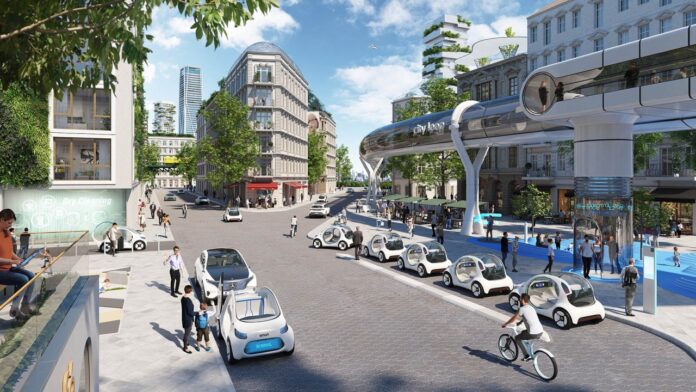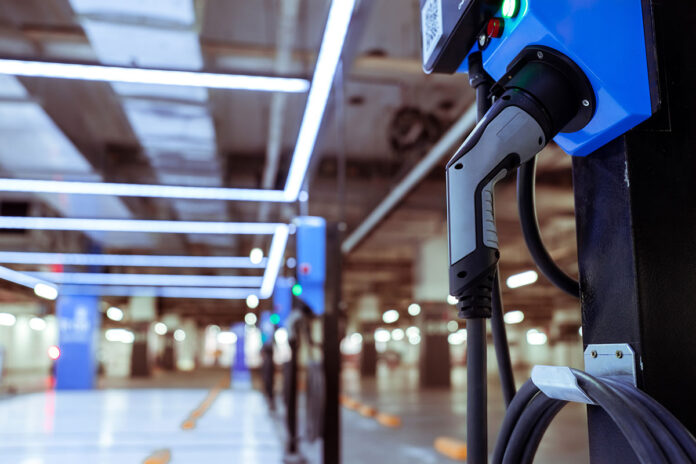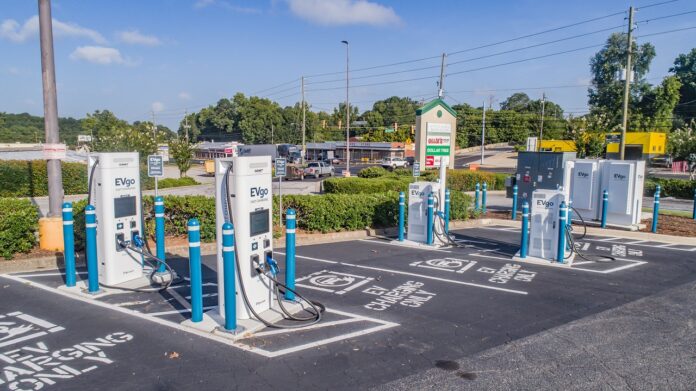The landscape of urban transportation is undergoing a profound transformation, fueled by environmental consciousness and technological innovation. At the forefront of this revolution are electric vehicles (EVs), emerging as the forerunner of sustainable mobility solutions. As cities cope with air pollution, climate change, and traffic congestion, EVs have emerged as a powerful tool to combat these issues directly.
Urban areas are the epicenters of both economic growth and environmental challenges. The combustion engines of traditional vehicles have contributed significantly to air pollution, emitting harmful pollutants that degrade air quality and compromise public health. EVs offer a simple solution to this problem. These cars and trucks emit zero tailpipe emissions and drastically reduce the pollutants that choke our cities, harm ecosystems and lead to health issues.
Clean Mobility for Cleaner Cities

Cities worldwide are at a crossroads, confronting a pressing need to curtail pollution and emissions while accommodating the mobility needs of their growing populations. Traditional internal combustion engine vehicles have long been a major contributor to air pollution and greenhouse gas emissions. Electric vehicles, propelled by electricity stored in high-capacity batteries, offer a promising alternative that produces zero tailpipe emissions and less sound contamination. These modern vehicles are surprisingly powerful and their autonomy is getting closer to that of their traditional counterparts. Those features contribute to sustainability in the city. This transition to electric-powered public transport such as taxis and buses can significantly alleviate the air quality crisis in urban areas, making the air we breathe healthier for everyone.
Building the EV Infrastructure
The widespread adoption of electric buses and trains hinges on the availability of a robust charging infrastructure. A critical aspect of EV integration in public transport systems is the development of charging stations strategically positioned throughout urban areas. These stations must be conveniently located at key transportation hubs, bus stops, and train stations to ensure that the electric fleet remains operational at all times. Governments and private enterprises play a pivotal role in funding and constructing this charging network, creating a backbone for the electrified future of public transport.
In addition to traditional charging stations, innovative solutions such as overhead charging systems for buses and inductive charging platforms are being explored. Far from being science fiction and closer to being a reality, these technologies aim to make charging as seamless and efficient as possible, reducing downtime for public transport vehicles and increasing overall system efficiency. The integration of electric vehicles in public transportation will help pave the way for a broader acceptance of these alternative options for travel.
Benefits of Electric Public Transport

Electric public transport promises a cascade of benefits for cities and their inhabitants. First and foremost, the reduction of exhaust emissions translates into improved air quality, which directly impacts public health by lowering the prevalence of respiratory diseases and other health issues related to poor air quality. Additionally, quieter electric buses and trains diminish noise pollution, creating more tranquil urban environments.
As cities strive to optimize traffic flow, electric public transport contributes by reducing congestion and offering a more efficient transportation solution. Electric buses, with their smooth and instantaneous torque delivery, can navigate traffic more effectively, reducing travel times and providing a more pleasant commuting experience. This efficiency also extends to cost savings for both passengers and operators, as electric vehicles have lower fuel and maintenance costs compared to their conventional counterparts.
Advancements in Technology
The evolution of electric vehicle charging technology is on an accelerated trajectory, offering faster charging times and increased convenience. Rapid charging stations equipped with cutting-edge battery management systems can provide a significant charge in just a matter of minutes, reducing downtime for public transport vehicles. Additionally, smart charging solutions allow operators to optimize charging schedules, taking advantage of off-peak hours when electricity demand is lower, thereby reducing operational costs.
Continual research and development are leading to breakthroughs in battery technology, enhancing energy density and longevity. Solid-state batteries, for instance, promise higher capacity and quicker charging times, further enhancing the viability of electric public transport. As these technologies mature, the range anxiety associated with electric vehicles will become a thing of the past, solidifying their role in urban mobility.
Addressing Range Anxiety and Battery Technology

While the potential of electric public transport is undeniable, some challenges persist. Range anxiety—the fear of running out of battery power before reaching the destination—has been a concern for EV adoption. However, advancements in battery technology have steadily extended the range of electric buses and trains, alleviating this worry and making electric public transport increasingly viable. Additionally, research into swappable battery systems and on-route charging will further mitigate range limitations, fostering confidence in the feasibility of electric transport solutions.
Swappable battery systems involve the quick replacement of depleted batteries with fully charged ones at designated stops. This approach eliminates the need for lengthy charging sessions and provides a seamless transition for public transport vehicles. On-route charging, on the other hand, involves installing charging infrastructure along the routes, allowing vehicles to recharge while picking up passengers or during scheduled stops. These innovative solutions ensure that electric public transport remains operational and efficient, regardless of route length or battery capacity.
Improved Policies and Collaboration
The transition to electric public transport requires a multi-faceted approach involving policy initiatives, private sector engagement, and public collaboration. Governments can incentivize the adoption of electric vehicles through tax breaks, subsidies, and regulations that prioritize emission reductions. Collaboration between local authorities, transportation agencies, and private companies is vital to establishing a seamless and comprehensive electric transportation network. Additionally, improving the price of public transportation and charging stations may also improve adoption as well. By combining forces, stakeholders can expedite the integration of electric vehicles into existing public transport systems, driving us closer to a truly sustainable urban mobility.
Commercial Charging Stations

The success of electric public transport depends on a network of reliable charging stations, and this need extends beyond buses and trains. The advent of electric taxis, rideshare services, and delivery vehicles underscores the significance of commercial charging stations. These stations cater to a diverse range of electric vehicles, ensuring that urban transportation as a whole can transition to cleaner energy sources.
Businesses, in collaboration with local authorities, can seize the opportunity to invest in charging infrastructure, creating a symbiotic relationship that fosters EV adoption and sustainable urban development. Moreover, charging stations can be equipped with amenities such as rest areas, Wi-Fi, and convenience stores, making charging stops convenient and enjoyable for both drivers and passengers.









